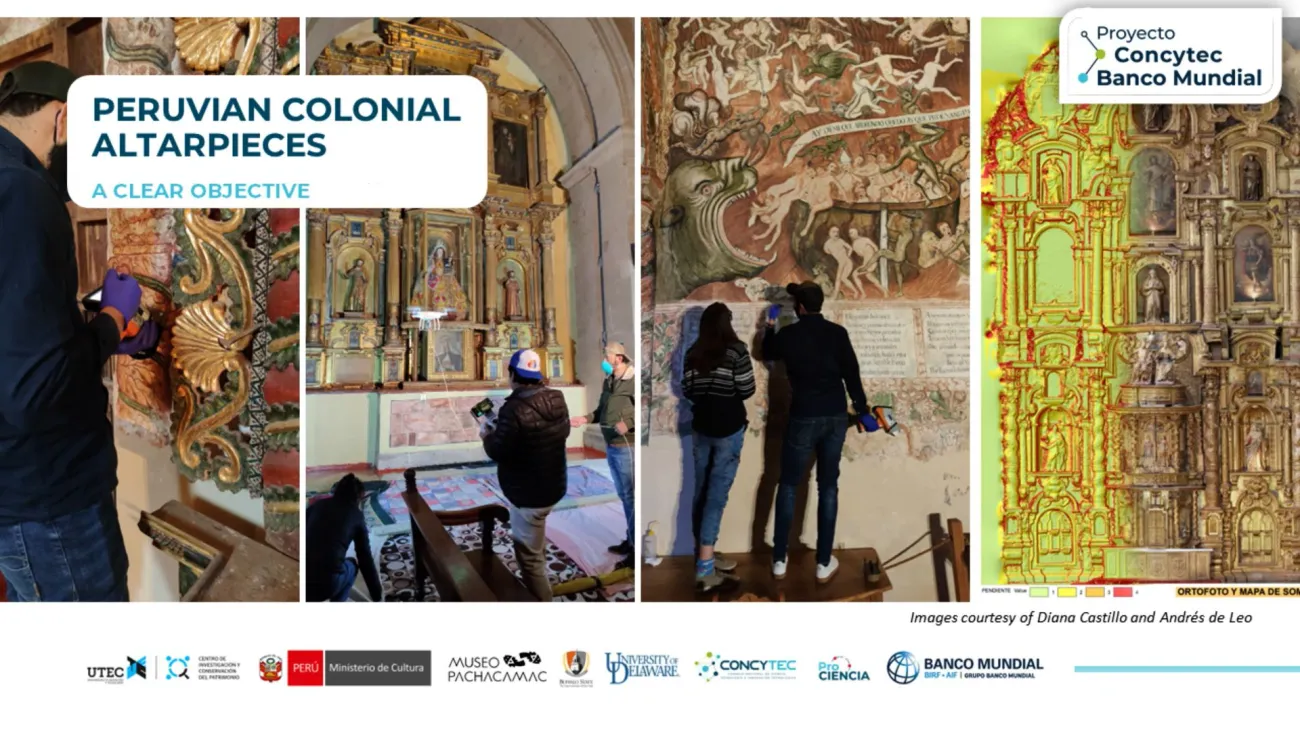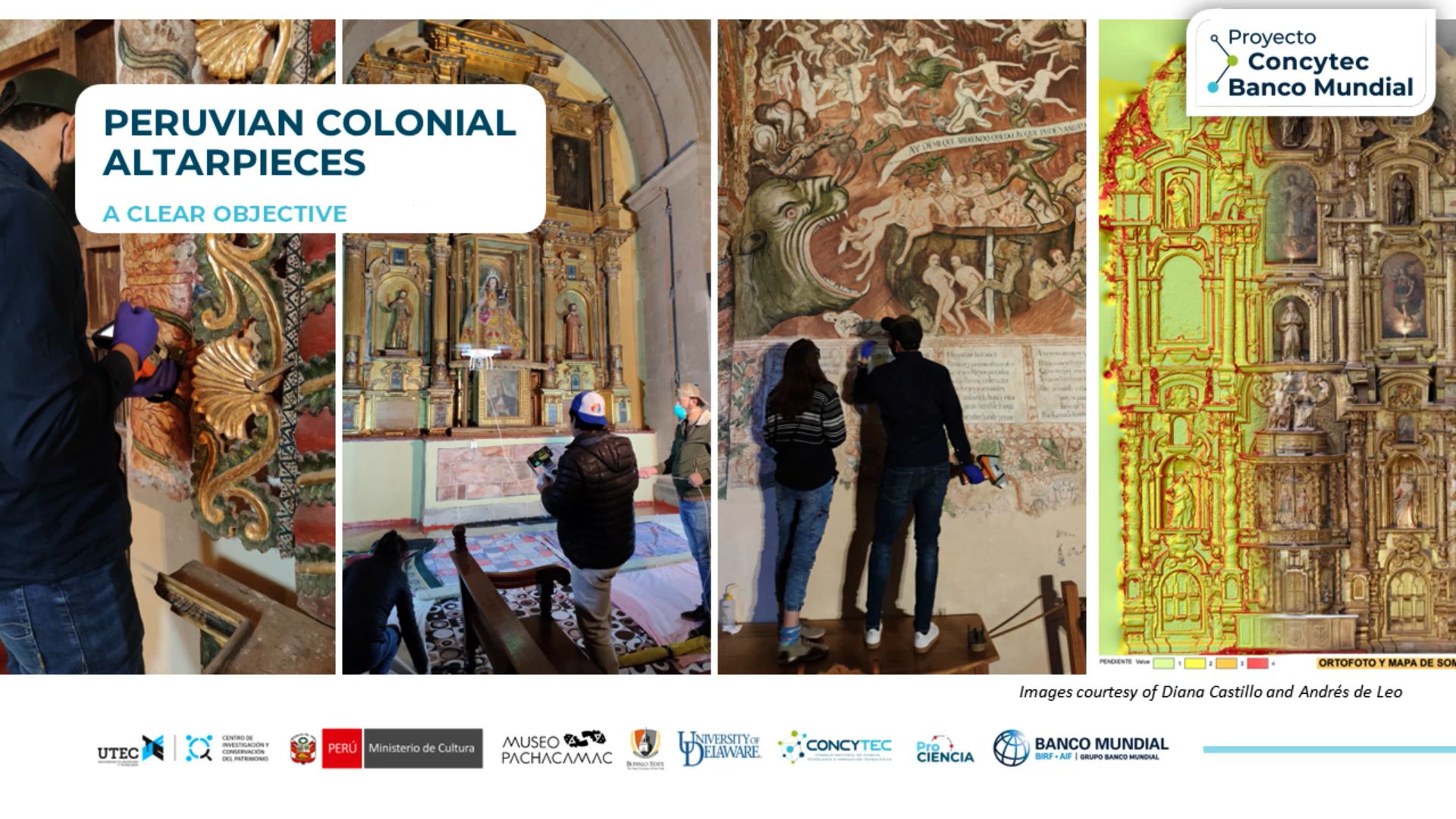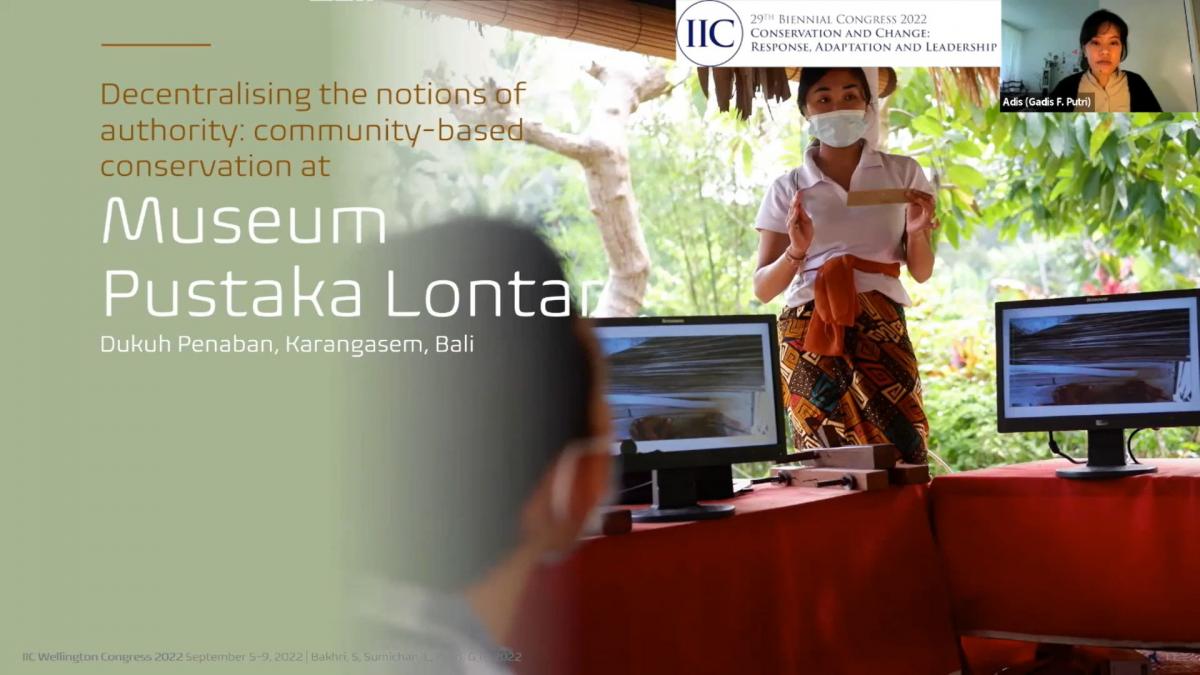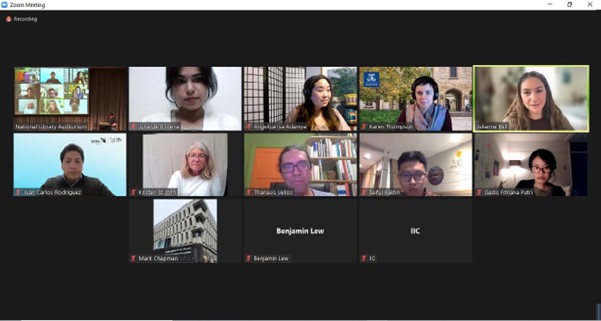Session 1
Submitted by sharragrow on 07 Sep 2022

Júlia Junger
Tuesday, Session 1: Education and Collaboration
“Education and Collaboration” was the first technical session of the IIC Congress, and what a way to start things off! As the name suggests, it focused on the collaboration, unity, and multidisciplinary aspects of the conservation field, which are ever-present characteristics, no matter the country. The enthralling and diverse projects all share the same quality: those involved worked tirelessly to solidify relations and explore means of optimizing information—and, consequentially, heritage preservation itself—amongst fellow conservators, other cultural institutions, governments, or their own respective communities.

Briefly going over the four presentations, we can say that the first two had their similarities and even complemented each other. Julianne Bell told us about the collection of data regarding polymer-based collections in Australia in a more structured and patterned system, specially developed for this purpose, which can also be modified by the additions of fellow professionals in “Collaborative Development of Polymer-based Collection Survey Methodology and Relational Data Model”. Athanasios Velios and Kristen St John talked about the development and adaptation of a documentation data system, as well as guidelines for the adoption of universal conservation-related terminologies, encouraging consultation, sharing and comparison between professionals from different countries in “Linked Conservation Data: Driving Change in Documentation Practice”.

The final two presentations related to each other on a contextual level, both trying and succeeding to overcome major neglect issues in Peru and Indonesia. In “A Value Chain Model for Research and Education in Heritage Conservation: the Research Centre for Heritage Conservation in Lima, Peru”, Angélica Isa-Adaniya, Anibal Alviz- Meza, and Juan Carlos F. Rodriguez-Reyes talked about how conservation projects have the potential to form a co-dependent relationships with other fronts, guaranteeing them continuity; and in “Change Comes From Within: Shared Efforts in Developing Conservation in Indonesia”, Saiful Bakhri, Lia Sumichan, and Gadis Putri presented an internship program in which Indonesian undergraduate students interested in conservation were trained and mentored—such a degree is not currently offered by any University in the country.
Of course, we cannot forget the follow-up Q&A hybrid session, filled with engrossing questions! For instance, I myself, asked Saiful and Gadis if they plan on developing future projects with the larger community, not only with people who want to pursue conservation as a career. They replied that there is interest, since people must appropriate their own heritage. In-person attendees seemed to be willing to further the discussion about the first two presentations and, because they relate to each other so much, the respective panellists were able to talk a bit more about aspects regarding the future additions of new data to the systems they developed. Analysing the evident curiosity in this kind of topic, one could even predict that it will become increasingly more popular over the years.
The two presentations that stood out to me were the last two, especially Angélica’s. Every attendee of this Congress knows that recognition, validation and financial support are delicate topics within the field, which may be worsened when it comes to emerging countries. As a South American undergraduate student, it was truly inspiring and uplifting to see some of my seniors, who come from similar backgrounds, making a difference in their own countries and stating that nothing stops future projects from expanding to their respective neighbours. The panellists ended their speeches on a positive note, inspiring us to look forward to later projects.

That does not make the remaining works any less important! Creating patterns and means of communicating internationally in less challenging ways, thus helping with the development of archives and collections all over the world is remarkable, especially for the future generations of conservators, myself included. Allowing smaller institutions to include their insights and findings as well as modify the database according to their own needs will optimize future research. These presentations were amazing examples of how to use technology in our favour and to better what is already available. Overall, they all showcase how important developing a structured plan—based on research and references—and reaching out to others, both people and institutions, are essential.
Author:
Júlia Junger is a Conservation and Restoration student at the Federal University of Rio de Janeiro, Brazil.
Image Captions:
Screen shot from presentation by Angélica Isa-Adaniya, Anibal Alviz-Meza and Juan Carlos F. Rodriguez-Reyes in Session 1
Screenshot from presentation by Saiful Bakhri, Lia Sumichan and Gadis Putri in Session 1
Screen shot of the panellists during the Q&A Session (Zoom meeting). Image taken by Júlia Junger, from Session 1.